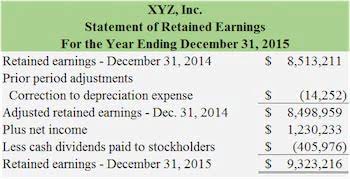
Finance Strategists has an advertising relationship with some of the companies included on this website. We may earn a commission when you click on a link or make a purchase through the links on our site. All of our content is based on objective analysis, and https://www.bookstime.com/ the opinions are our own.
Balance Sheets May Be Susceptible to Errors and Fraud
- I say normal balances because they don’t always have balances on those sides—but they should.
- This is posted to the Cash T-account on the debit side (left side).
- Splitting out debits and credits makes it easier to quickly spot things when looking at the ledger.
- This accounting tool helps illustrate how banks manage their funds, showing how deposits are transformed into loans while maintaining required reserves.
- A balance sheet is also different from an income statement in several ways, most notably the time frame it covers and the items included.
- Some accounts have a debit-side balance, while others have a credit-side balance.
A balance sheet date is the end of an accounting period for financial reporting. And balance sheets are projected into the future for business plans or financial modeling in M&A and other decision-making. A single entry system of accounting does not provide enough information to be represented by the visual structure a T account offers. As I owe both this month and last month’s rent, I have to pay £4000.
Comprehensive Guide to Inventory Accounting
- By the time you have an accounting certificate, you have at least a decade of experience using T accounts.
- When we introduced debits and credits, you learned about the usefulness of T-accounts as a graphic representation of any account in the general ledger.
- Just like journalizing, posting entries is done throughout each accounting period.
- Assets are typically listed as individual line items and then as total assets in a balance sheet.
- A single transaction will have impacts across all reports due to the way debits and credits work.
- For asset accounts, which include cash, accounts receivable, inventory, PP&E, and others, the left side of the T Account (debit side) is always an increase to the account.
- First, these debit and credit entries are posted into the journal, as a journal entry.
I’ve agreed to pay for the coffee machine next t account balance sheet month so my accounts payable is increased (credited) by £700. Accounts payable is a liability account, keeping track of bills I still have to pay in future. By breaking transactions down into a simple, digestible form, you can visualise which accounts are being debited and which are being credited.
- Cash had a debit of $20,000 in the journal entry, so $20,000 is transferred to the general ledger in the debit column.
- Two entries (hence, double entry), one on the left and one on the right, so everything is good.
- Companies compute their return on assets (ROA), equity (ROE), or investment (ROI) to measure performance.
- T accounts are a simple and convenient way to organize your journals for basic bookkeeping functions.
- A compound entry is when there is more than one account listed under the debit and/or credit column of a journal entry (as seen in the following).
- Noncurrent assets are long-term investments that the company does not expect to convert into cash within a year or have a lifespan of more than one year.
- The name is based on the way that a T-account appears, with two columns and one line.
T Accounts for the Income Statement
This may include accounts payables, rent and utility payments, current debts or notes payables, current portion of long-term debt, and other accrued expenses. Once all journal entries have been posted to T-accounts, we can check to make sure the accounting equation remains balanced. A summary showing the T-accounts for Printing Plus is presented in Figure 3.10. Another key element to understanding the general ledger, and the third step in the accounting cycle, is how to calculate balances in ledger accounts. Notice that for this entry, the rules for recording journal entries have been followed.

Discover how businesses like yours are using Baremetrics to drive growth and success. Have an idea of how other SaaS companies are doing and see how your business stacks up. The best consultants, agencies, and specialized services to help you grow. View all your subscriptions together to provide a holistic view of your companies health. In this example, I need to pay rent for the next quarter in advance for my coffee shop’s unit space. If that’s not the case, make sure to double-check your books as you’ve probably made an accounting error along the way.
Step 3: Identify Your Liabilities

It makes it a valuable tool for any student pursuing a career in accounting, as it allows for a more in-depth understanding of an organisation’s financial standing. A T Account is the visual structure used in double entry bookkeeping to keep debits and credits separated. For example, on a T-chart, debits are listed to the left of the vertical line while credits are listed on the right side of the vertical line making the company’s general ledger easier to read. T-accounts are used to track individual account balances and transactions, while trial balance summaries are used to ensure the overall accuracy of a company’s financial records. Whether you are an accountant or a decision-maker the language of business finance is rooted in accounting. Whatever your role is in the business, it’s worth grasping the basics of this language.

Received Payment for Billed Services
This stock is a previously outstanding stock that is purchased from stockholders by the issuing company. Like assets, liabilities can be classified as either current or noncurrent liabilities. Noncurrent assets include tangible assets, such as land, buildings, machinery, and equipment. Current assets are typically those that a company expects to convert easily into https://www.instagram.com/bookstime_inc cash within a year. It is also possible to grasp the information found in a balance sheet to calculate important company metrics, such as profitability, liquidity, and debt-to-equity ratio.